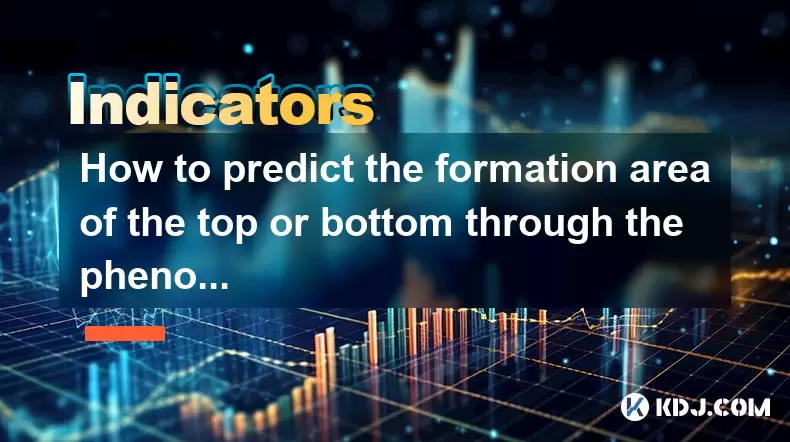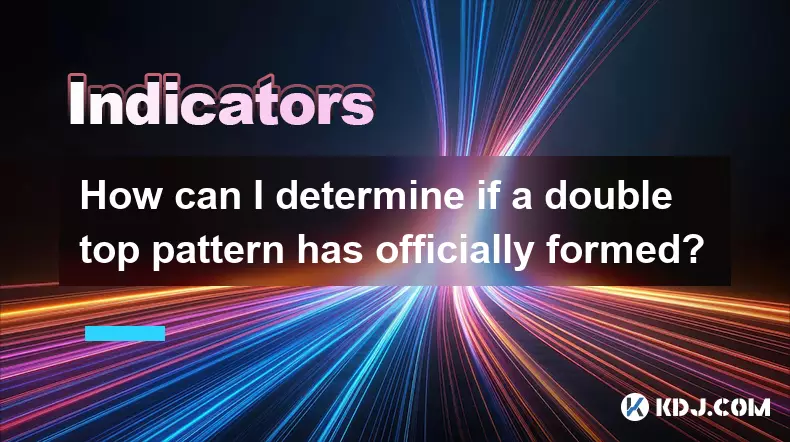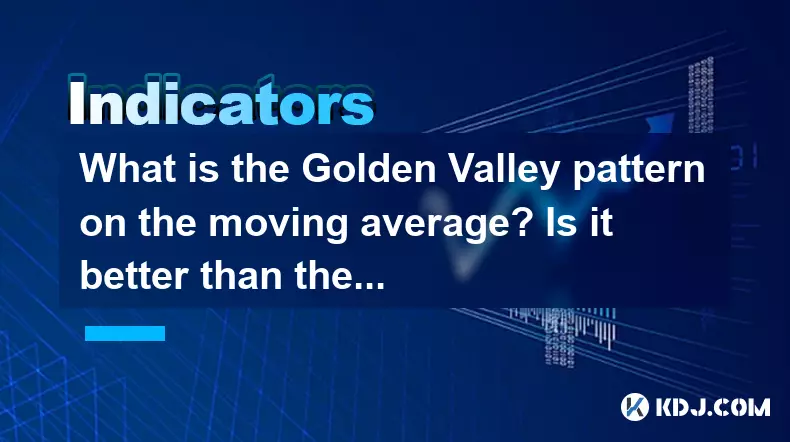-
 bitcoin
bitcoin $122090.672462 USD
1.59% -
 ethereum
ethereum $4493.758974 USD
0.56% -
 xrp
xrp $3.033145 USD
0.65% -
 tether
tether $1.000629 USD
0.00% -
 bnb
bnb $1169.854250 USD
7.07% -
 solana
solana $230.954786 USD
-0.19% -
 usd-coin
usd-coin $0.999785 USD
0.00% -
 dogecoin
dogecoin $0.256108 USD
-1.12% -
 tron
tron $0.342333 USD
-0.12% -
 cardano
cardano $0.859632 USD
-0.10% -
 hyperliquid
hyperliquid $48.932146 USD
-2.25% -
 chainlink
chainlink $22.345466 USD
-1.29% -
 ethena-usde
ethena-usde $1.000217 USD
-0.03% -
 avalanche
avalanche $31.203456 USD
1.93% -
 sui
sui $3.579145 USD
1.05%
How to predict the formation area of the top or bottom through the phenomenon of volume and price divergence?
Volume and price divergence is key for traders to predict crypto tops and bottoms; it signals potential reversals when price and volume move oppositely.
Jun 07, 2025 at 11:50 pm

Understanding how to predict the formation area of the top or bottom of a cryptocurrency's price through the phenomenon of volume and price divergence is crucial for traders. Volume and price divergence refers to a situation where the price of an asset moves in one direction while the trading volume moves in the opposite direction. This divergence can signal potential reversals in the market, helping traders to identify when a top or bottom might be forming.
Identifying Volume and Price Divergence
To predict the formation area of a top or bottom, you need to closely monitor both the price movements and the trading volume of the cryptocurrency. Divergence occurs when the price reaches new highs or lows, but the volume does not confirm these moves. For instance, if the price of a cryptocurrency reaches a new high but the volume is significantly lower than during previous highs, this could indicate a weakening bullish trend and a potential top formation.
Similarly, if the price hits a new low with declining volume, it might suggest that the bearish momentum is fading, signaling a potential bottom. Traders use this information to anticipate where the price might reverse and start moving in the opposite direction.
Analyzing Bullish Divergence
Bullish divergence occurs when the price of a cryptocurrency makes a lower low, but the trading volume makes a higher low. This suggests that the selling pressure is decreasing, and a reversal to the upside might be imminent. To identify bullish divergence:
- Monitor the price chart: Look for instances where the price makes a lower low.
- Check the volume: Confirm that the volume at the second low is higher than at the first low.
- Analyze the trend: Ensure that the overall trend is bearish before the divergence occurs.
When these conditions are met, it indicates that the market might be ready to reverse from a downtrend to an uptrend, signaling a potential bottom formation.
Analyzing Bearish Divergence
Bearish divergence is the opposite of bullish divergence. It occurs when the price makes a higher high, but the trading volume makes a lower high. This suggests that the buying pressure is waning, and a reversal to the downside might be approaching. To identify bearish divergence:
- Monitor the price chart: Look for instances where the price makes a higher high.
- Check the volume: Confirm that the volume at the second high is lower than at the first high.
- Analyze the trend: Ensure that the overall trend is bullish before the divergence occurs.
When these conditions are met, it indicates that the market might be ready to reverse from an uptrend to a downtrend, signaling a potential top formation.
Using Technical Indicators to Confirm Divergence
While observing volume and price movements, traders often use technical indicators to confirm the divergence. Relative Strength Index (RSI) and Moving Average Convergence Divergence (MACD) are two popular indicators that can help validate the divergence signals.
- RSI: This momentum oscillator can show divergence by comparing the price action to the RSI values. If the price makes a new high but the RSI does not, it can confirm bearish divergence. Conversely, if the price makes a new low but the RSI does not, it can confirm bullish divergence.
- MACD: This trend-following momentum indicator can also be used to identify divergence. When the MACD line diverges from the price, it can signal a potential reversal. For instance, if the price makes a new high but the MACD line does not, it can confirm bearish divergence.
By combining volume and price divergence with these technical indicators, traders can increase the accuracy of their predictions about the formation areas of tops and bottoms.
Practical Example of Volume and Price Divergence
To illustrate how to apply these concepts, let's consider a practical example. Suppose you are tracking the price of Bitcoin (BTC) and notice the following:
- Price action: Bitcoin reaches a new high of $60,000.
- Volume: The trading volume during this high is significantly lower than when Bitcoin reached $50,000.
This scenario indicates bearish divergence, suggesting that the bullish momentum might be weakening, and a top could be forming. To confirm this, you can:
- Check the RSI: If the RSI does not reach a new high along with the price, it strengthens the bearish divergence signal.
- Check the MACD: If the MACD line does not follow the price to a new high, it further confirms the bearish divergence.
Based on these observations, you might anticipate a potential reversal and adjust your trading strategy accordingly.
Implementing Volume and Price Divergence in Trading
To effectively use volume and price divergence in your trading strategy, follow these steps:
- Select a cryptocurrency: Choose a cryptocurrency you want to analyze, such as Bitcoin or Ethereum.
- Set up your charts: Use a trading platform that allows you to view both price and volume charts simultaneously.
- Monitor for divergence: Regularly check for instances where the price and volume diverge, as described earlier.
- Confirm with indicators: Use technical indicators like RSI and MACD to validate the divergence signals.
- Make trading decisions: Based on the divergence and confirmation from indicators, decide whether to enter or exit trades.
By following these steps, you can systematically predict the formation areas of tops and bottoms, enhancing your trading decisions.
Frequently Asked Questions
Q: Can volume and price divergence be used for short-term trading?A: Yes, volume and price divergence can be applied to short-term trading. Traders often use these signals to identify potential entry and exit points within shorter time frames, such as intraday or swing trading. However, the accuracy of these signals can vary depending on the market conditions and the specific cryptocurrency being traded.
Q: Are there any cryptocurrencies where volume and price divergence is more reliable?A: The reliability of volume and price divergence can vary across different cryptocurrencies. Generally, more liquid and widely traded cryptocurrencies like Bitcoin and Ethereum tend to provide more reliable signals due to their higher trading volumes and broader market participation. However, traders should always consider the specific market dynamics of each cryptocurrency.
Q: How can I differentiate between a false divergence and a true divergence?A: Differentiating between false and true divergence requires careful analysis and the use of multiple indicators. A false divergence might be indicated if the divergence signal is not confirmed by other technical indicators like RSI or MACD. Additionally, consider the broader market context and any significant news events that could influence the price movement. True divergence is more likely when multiple indicators align and the overall market trend supports the divergence signal.
Q: Can volume and price divergence be used in conjunction with other trading strategies?A: Yes, volume and price divergence can be effectively combined with other trading strategies. For instance, traders might use divergence signals to confirm entry or exit points identified by trend-following strategies, breakout strategies, or mean reversion strategies. Integrating divergence analysis with other methods can enhance the overall robustness of a trading strategy.
Disclaimer:info@kdj.com
The information provided is not trading advice. kdj.com does not assume any responsibility for any investments made based on the information provided in this article. Cryptocurrencies are highly volatile and it is highly recommended that you invest with caution after thorough research!
If you believe that the content used on this website infringes your copyright, please contact us immediately (info@kdj.com) and we will delete it promptly.
- BlockDAG, DOGE, HYPE Sponsorship: Crypto Trends Shaping 2025
- 2025-10-01 00:25:13
- Deutsche Börse and Circle: A StableCoin Adoption Powerhouse in Europe
- 2025-10-01 00:25:13
- BlockDAG's Presale Buzz: Is It the Crypto to Watch in October 2025?
- 2025-10-01 00:30:13
- Bitcoin, Crypto, and IQ: When Genius Meets Digital Gold?
- 2025-10-01 00:30:13
- Stablecoins, American Innovation, and Wallet Tokens: The Next Frontier
- 2025-10-01 00:35:12
- NBU, Coins, and Crypto in Ukraine: A New Yorker's Take
- 2025-10-01 00:45:14
Related knowledge

What is a tower bottom candlestick pattern? Does it have a high success rate?
Sep 22,2025 at 07:18am
Tower Bottom Candlestick Pattern Explained1. The tower bottom candlestick pattern is a reversal formation that typically appears at the end of a downt...

What is a black hole pattern in the MACD indicator? Is it a cause for concern?
Sep 21,2025 at 06:54pm
Bitcoin's Role in Decentralized Finance1. Bitcoin remains the cornerstone of decentralized finance, serving as a benchmark for value and security acro...

How can I use the psychological line (PSY) to determine market sentiment?
Sep 17,2025 at 02:19pm
Understanding the Psychological Line (PSY) in Cryptocurrency TradingThe Psychological Line, commonly referred to as PSY, is a momentum oscillator used...

How can I determine if a double top pattern has officially formed?
Sep 21,2025 at 03:18am
Understanding the Structure of a Double Top Pattern1. A double top pattern consists of two distinct peaks that reach approximately the same price leve...

What is the Golden Valley pattern on the moving average? Is it better than the Silver Valley pattern?
Sep 21,2025 at 02:54pm
Understanding the Golden Valley Pattern in Moving Averages1. The Golden Valley pattern is a technical formation observed in cryptocurrency price chart...

What does a death cross of the RSI in the strong zone (above 50) mean?
Sep 17,2025 at 10:54pm
Understanding the Death Cross in RSI Context1. The term 'death cross' is traditionally associated with moving averages, where a short-term average cro...

What is a tower bottom candlestick pattern? Does it have a high success rate?
Sep 22,2025 at 07:18am
Tower Bottom Candlestick Pattern Explained1. The tower bottom candlestick pattern is a reversal formation that typically appears at the end of a downt...

What is a black hole pattern in the MACD indicator? Is it a cause for concern?
Sep 21,2025 at 06:54pm
Bitcoin's Role in Decentralized Finance1. Bitcoin remains the cornerstone of decentralized finance, serving as a benchmark for value and security acro...

How can I use the psychological line (PSY) to determine market sentiment?
Sep 17,2025 at 02:19pm
Understanding the Psychological Line (PSY) in Cryptocurrency TradingThe Psychological Line, commonly referred to as PSY, is a momentum oscillator used...

How can I determine if a double top pattern has officially formed?
Sep 21,2025 at 03:18am
Understanding the Structure of a Double Top Pattern1. A double top pattern consists of two distinct peaks that reach approximately the same price leve...

What is the Golden Valley pattern on the moving average? Is it better than the Silver Valley pattern?
Sep 21,2025 at 02:54pm
Understanding the Golden Valley Pattern in Moving Averages1. The Golden Valley pattern is a technical formation observed in cryptocurrency price chart...

What does a death cross of the RSI in the strong zone (above 50) mean?
Sep 17,2025 at 10:54pm
Understanding the Death Cross in RSI Context1. The term 'death cross' is traditionally associated with moving averages, where a short-term average cro...
See all articles










































































